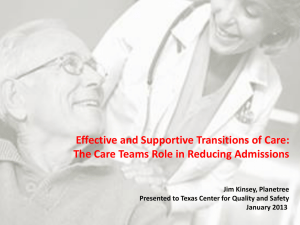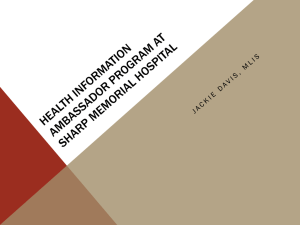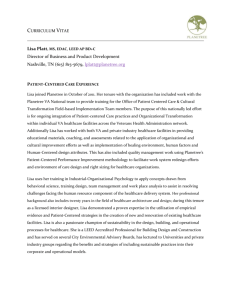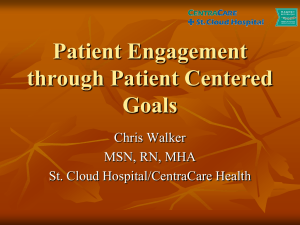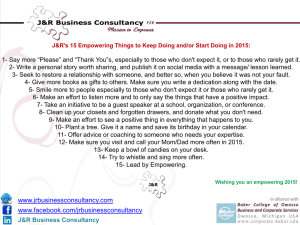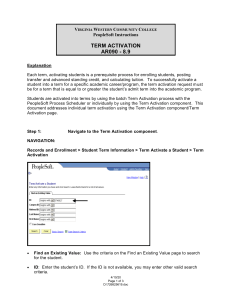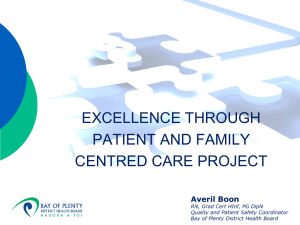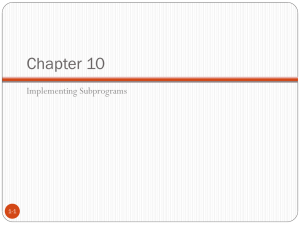Patient Activation and Engagement
advertisement
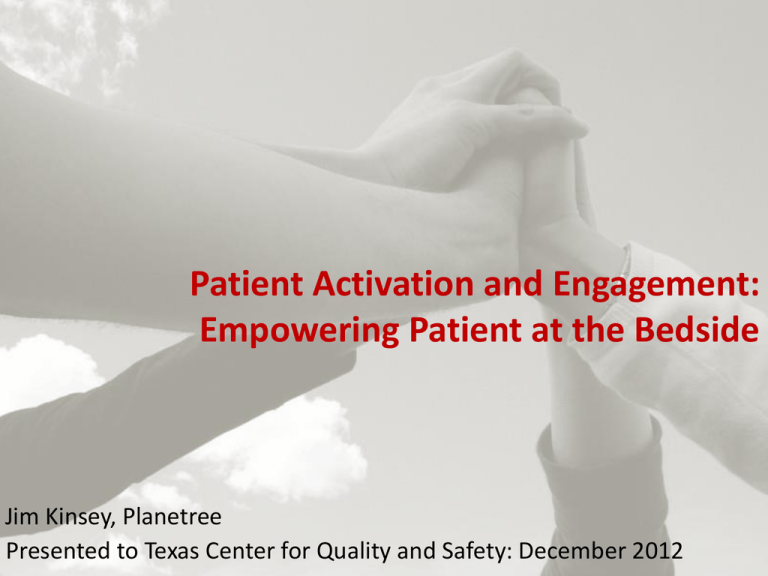
Patient Activation and Engagement: Empowering Patient at the Bedside Jim Kinsey, Senior Consultation Services Specialist-Continuing Care Jim Kinsey, Planetree Presented to Texas Center for Quality and Safety: December 2012 Defining the Terms • To equip or supply with an ability; enable Empower Engage • Committed, as to a cause • Set in motion; make active or more active Activate Patient Activation/Empowerment and ACA “By empowering patients to understand that providers are not merely professionals to see when one gets “sick”, but valuable partners that can help provide advice and tools for individuals to take charge and achieve health outside the clinical setting. To realize the value this partnership can bring we first need to understand how to activate and maintain our engagement. That’s the hardest part of all.” Holly Korda, Ph.D. Steps to Patient Engagement Outcomes of Patient Engagement and Activation Patient starts to take a role Patient builds confidence and knowledge Patient takes action Patient maintains behaviors The Patient Activation Measure® (PAM®) Engagement at the Bedside • Extensive team development • Care partner programs • Patient education • Patient learning styles • Cohesive engagement plan between shifts • Social network evaluation Extensive team development • Communication • Cohesiveness • Goal oriented • Patient centered Care partner program • Coaching • Identifying solutions • Collaborative learning • Advocating Patient education Dynamic-Entertaining-Meaningful-Personal Patient learning styles Visual Hands-on Auditory Reading Cohesive engagement plan between shifts • Bedside report • Education plan • Intentional rounding • Interdisciplinary cohesiveness Social network evaluation Who How When Where Organizational engagement tools: building a balanced infrastructure • Inter-provider relationships • Advancing engagement to improve HCAPHS • Patient Family Advisory Councils Inter-provider relationships Advancing engagement to improve HCAPHS How would your patients answer these questions? • How often did nurses communicate well with patients? • Were you given information about what to do during their recovery at home? • How often did nurses listen carefully to you? • How often did hospital staff tell you what the medicine was for? • How often did hospital staff describe possible side effects in a way you could understand? Patient/Family Advisory Councils • Identify potential education needs • Empower patients to express needs • Act as a liaison between organization and community providers • Communicate personal experiences back to the organization “To move from a health care system that primarily treats the sick in America to one that actively promotes wellness in America…first listen to patients….They will be our guides in designing a health care system that supports meaningful patient partnerships and true patient-centered care.” Susan Frampton, PhD President Planetree Jim Kinsey, Planetree jkinsey@planetree.org 610.733.5140
